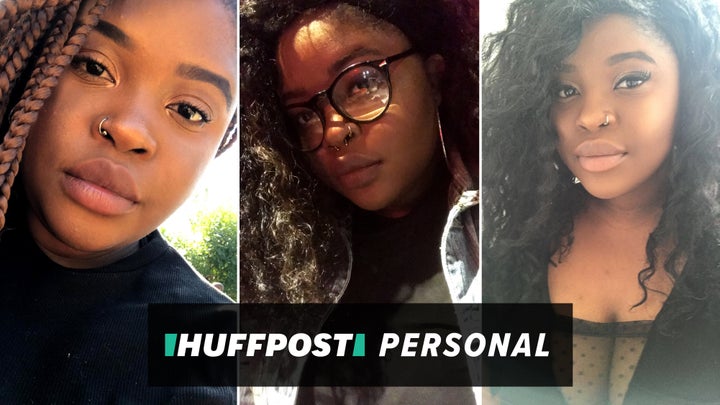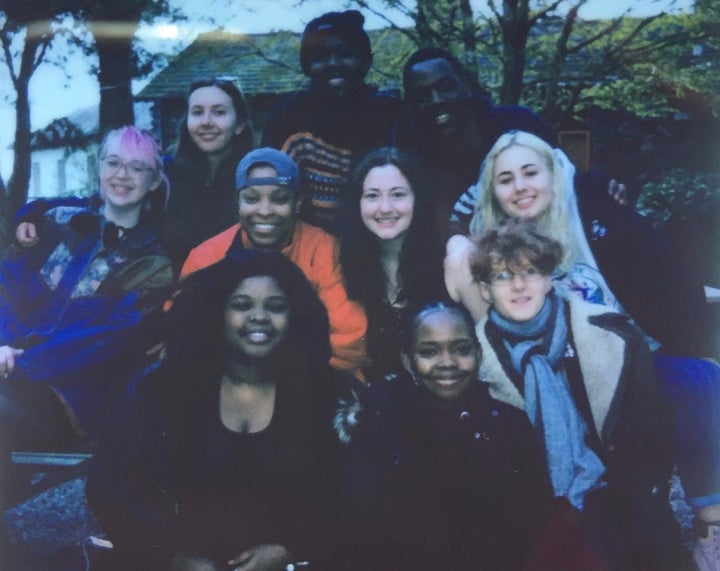
For as long as I remember, I have never had a strong idea of who I am.
Though there are a few consistencies (Paramore is my favourite band, Beyonce is my queen, I hold zero tolerance for all -isms and -phobias), other things such as my hobbies, music taste, favourite food and diet have always been pretty fluid and dependant on who I was with at the time.
I guess I always knew that other people didn’t necessarily get as influenced by others to the same degree that I did, but mirroring the behaviour of others after time together is normal, so I thought nothing of it. It wasn’t until I got diagnosed with borderline personality disorder that I began to re-question these facets of myself.
Borderline personality disorder (or BPD) is, as you might guess, a personality disorder. It is a very broad diagnosis but is typically characterised by unstable relationships with other people, unstable emotions, unstable sense of self and the inability to function. People with BPD tend to have other mental health conditions or behavioural issues such as depression, eating disorders, dissociation or impulsivity, all of which contribute to the misdiagnosis of individuals and the stigma behind the disorder.
“Whenever I was with someone new, I would genuinely live in the new version of myself. I would feel everything as if it were my original thought.”
When I found out one of the core characteristics of BPD is that unstable sense of self and self-image, I started realising the true reason for my fluctuation in identity, personality and even my opinions. Just look at my education: for two years I studied nursing with plans to convert to medicine, before I one day woke up and switched programs to psychology – and now I’m applying to university again looking to study journalism or film and theatre.
It’s not a case of ‘faking who you are’. Whenever I was with someone new, I would genuinely live in the new version of myself. I would feel everything as if it were my original thought. For two years, I was convinced that I wanted children – it wasn’t until things ended with the person I was intimate with that it dawned on me that, actually, I hate children. It sounds absurd, right? How can someone shift so significantly?
Well, we don’t really know. There’s limited research in the area, and scientists are still trying to figure that out. Nevertheless, the only way I’ve made sense of it for me is by thinking about a bowl of water: it can’t magically transform into a bowl of rock, much like how I can’t change into a completely new person. It can, however, freeze, liquify or turn into a gas depending on the environment.
In much the same way, a person with BPD will often change their habits, appearance or mannerisms depending on who they are with. Of course, identity issues are not exclusive to those with BPD – everyone changes to some degree in different social contexts but in people like myself, the change is more profound.

Since getting my diagnosis, I have been making an active effort to discover new things about myself, whereas before I just ‘went with the flow’ and allowed myself to be swept away by every stimulus.
I moved away from home to give myself the chance to explore my identity without the influence or preconceived notions people held about me, and I followed this by looking at my relationship with fashion – all of our personal fashion choices are continually evolving in line with trends, seasons, our personalities and lifestyle after all.
As we get older, other influences come to play, such as the changing times, the industry we work in, our age or even social or cultural group. Because of this, fashion ultimately plays a critical role in our self-identity and confidence. It is a legitimate and powerful form of self-expression. Our appearance can visually vocalise multiple overlapping identities such as our race, gender, sexuality and even our personal interests. Our style is even often a political statement.
In my case, I have always felt the need to have a ‘look’. But with personal style being tied so closely to identity, my inspiration would always be drawn from the people around me. In the same way my personality would shift, so would my wardrobe. In my ‘Premier League’ days, it’d be athletic and gym gear; when dating a hipster, I mimicked their use of rings and hats.
“You might peek inside my wardrobe and think these clothes looked so different, they must belong to at least four different people”
My wardrobe was like the skin of a chameleon, physically embodying the changes in my personality. I would go through stages of self-exploration and reinvention with every major life change (and when my budget allowed).
Pivotal points in my life could be mapped through my wardrobe. The random, disjointed mix of activewear, casual, glamour and evening dresses, illustrating the characteristics of the people I had dated. While it may be normal to have a wardrobe mixed with styles, mine was filled with whole collections of items I hadn’t worn in years. You might peek inside my wardrobe and think these clothes looked so different, they must belong to at least four different people.
Yet whenever relationships or chapters of my life would end, and I was left with just myself and my own thoughts, I would always return to wearing all black. I was unable to wear other clothes, which would feel foreign on my skin. Bright colours would make me feel exposed, like people were going to realise that I was a fraud at any moment. In black, I felt shrouded in security.
Post-diagnosis, I have started to realise that this has been another constant in my life, a grounding plate almost. With black, I feel like I have a blank page on which to rebuild the foundations of myself.

The colour black itself has had a long and symbolically shifting history. 14th Century Europe saw the earliest connotations of the colour associated with witchcraft and evil. Medieval sumptuary laws governed the dress codes for differing social classes: colours for nobility, rich purple for royals, while those who opposed the lifestyles of the rich wore black.
In the 19th Century, the colour was adopted by the Romantics (think Shelley, Byron and Keats) due to its melancholic aura. The Victorian era saw women in mourning donning the colour. Most famously, Queen Victoria herself is often said to have worn black for the rest of her life after Prince Albert’s death.
In the 1970s and 80s, black was utilised by the punk scene as a message of rebellion, worn by people who wished to live outside the social norms of the time. Around the same time, the Black Panther Party used the colour as a symbol of opposition, power and strength. These days, black is infamously the colour of fashion professionals, spearheaded by Rei Kawakubo. Fellow Japanese designer Yohji Yamamoto famously said black is ”modest and arrogant at the same time. Black is lazy and easy – but mysterious. But above all black says this: ‘I don’t bother you, don’t bother me.’”
“Building an all-black wardrobe means I don’t need to worry about not being able to wear certain items of clothing in the future”
In my case, I feel like I have the freedom to explore who I am without the exposure I felt before; I can make mistakes without scraps of evidence laid in my wardrobe for all to see. While I know I am not immune to outside stimuli, building an all-black wardrobe means I don’t need to worry about not being able to wear certain items of clothing in the future. I know I won’t have to feel like I am wearing someone else’s skin.
Maybe one day I will be able to safely diversify my colour palette but, right now, black is my uniform, my suit of armour, physically embodying stability.
As with all personality disorders, the broadness of the diagnosis means everyone’s experience differs from one another. What works for me may not work for you. But through fashion, I have discovered another part of my identity, using it as a stabilising force in the search for my identity. Maybe you can too?
Zuva is a spoken word artist, poet and freelance writer. For more information on her work, visit zuvapoetry.com
Have a compelling personal story you want to tell? Find out what we’re looking for here, and pitch us on ukpersonal@huffpost.com